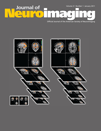Diffusion Tensor Imaging Following Shunt in a Patient with Hydrocephalus
J Neuroimaging 2011;21:69-72.
ABSTRACT
We report on a patient with hydrocephalus who was evaluated by diffusion tensor imaging (DTI) follow-up study before and after a shunt operation. A 48-year-old male patient and 6 age-matched control subjects were evaluated. The patient presented with hydrocephalus due to hemorrhage caused by the rupture of a right middle cerebral artery bifurcation aneurysm. Three longitudinal DTIs were acquired from the patient (pre-shunt, post-shunt 2 weeks, and post-shunt 8 weeks). The fractional anisotrophy values in the adjacent structures of the lateral ventricle, which were increased before the shunt operation, were decreased after the shunt operation. We think that DTI could be a useful tool for the evaluation of hydrocephalus.




